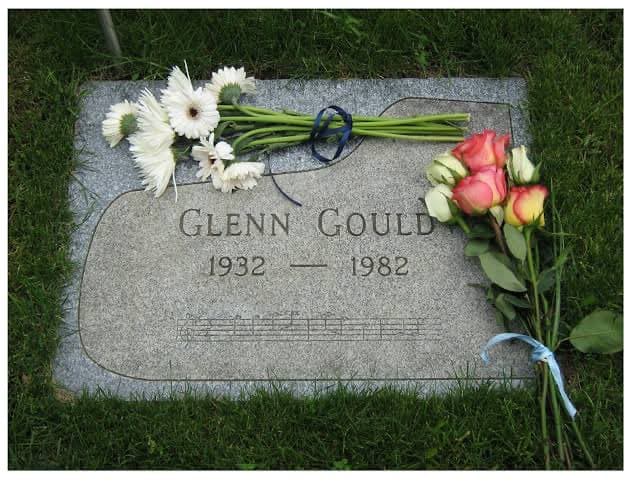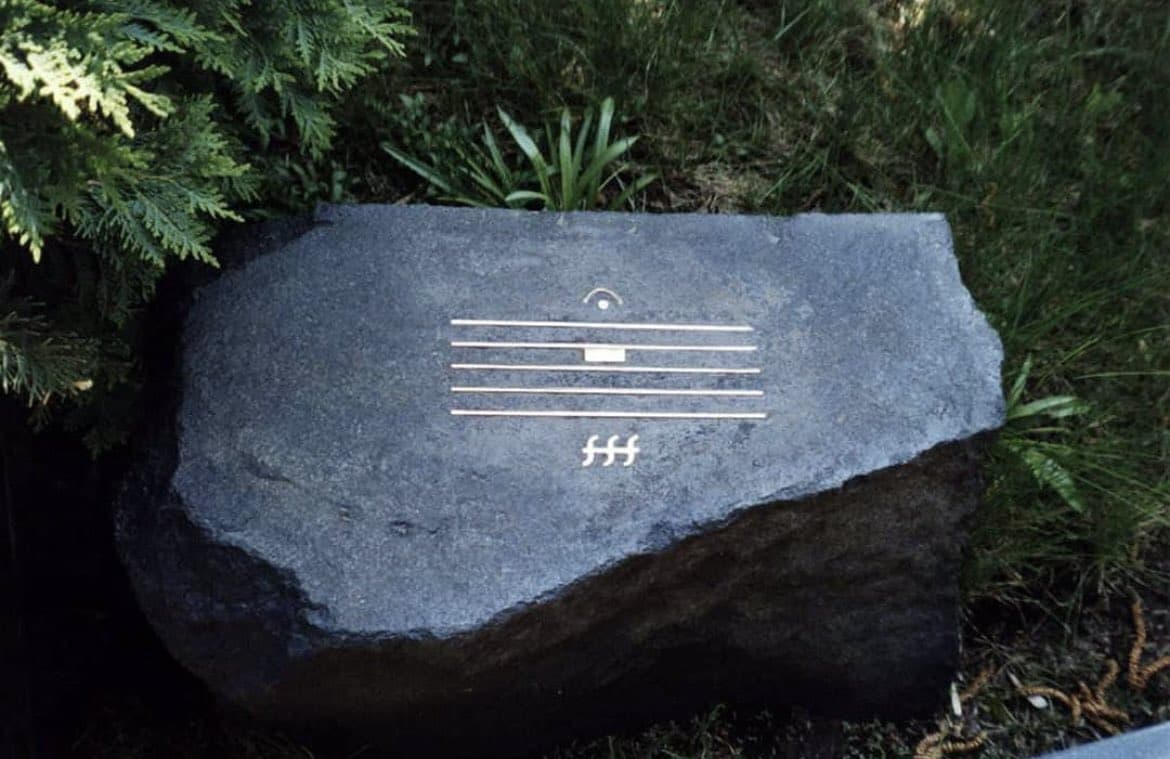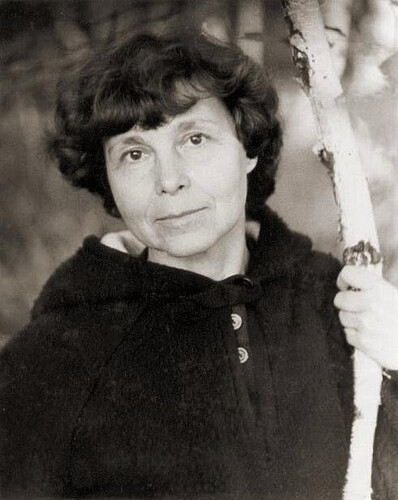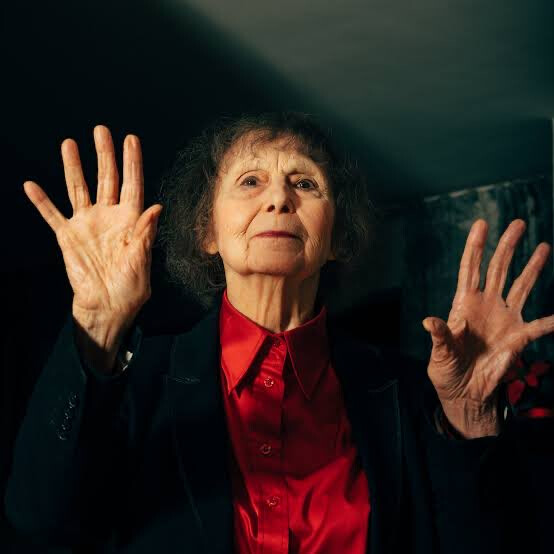The gravestone of Soviet-German composer Alfred Schnittke (1934 - 1998). It’s a musical staff with a semibreve (the center bar) indicating a rest or pause in the music. The fermata (the half circle + dot at the top) indicates to hold the note (in this case the rest) as long as desired. The note should then be performed fortississimo (the three f’s at the bottom), meaning it should be performed extremely loudly/strongly. So it’s essentially an extremely loud/strong silence (rest) to be held as long as desired.
One of the lesser known facts about Alfred Schnittke’s gravestone is that it was designed by his friend and fellow composer Sofia Gubaidulina. She was one of the closest collaborators and admirers of Schnittke, and they shared a similar aesthetic and spiritual vision in their music. Gubaidulina wanted to create a gravestone that would reflect Schnittke’s personality and style, as well as his sense of humor and irony. She chose the musical symbols that represented both silence and sound, life and death, eternity and temporality.
The gravestone was made by the sculptor Alexander Rukavishnikov, who also created the monument to Schnittke in Moscow. The gravestone is located in the Novodevichy Cemetery, where many other famous Russian artists, writers, and musicians are buried. The cemetery is also a cultural heritage site and a popular tourist attraction. The gravestone of Schnittke attracts many visitors who admire his music and legacy. Some of them even leave notes, flowers, or musical scores on his grave.
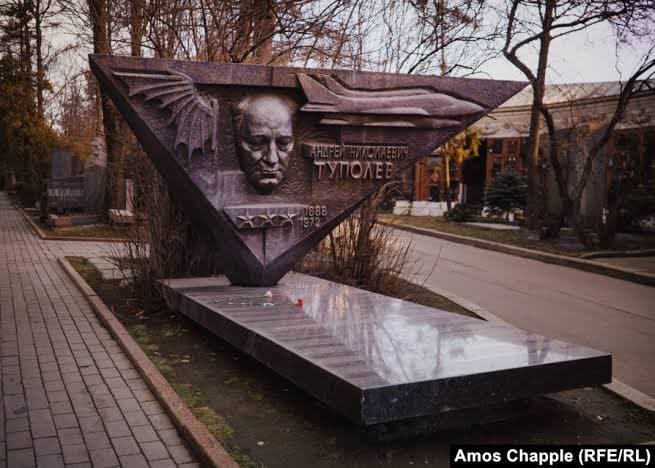
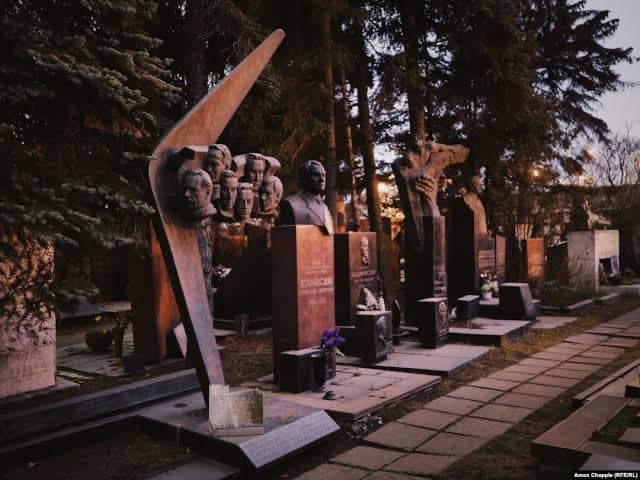
The gravestone of composer Alfred Schnittke is a unique and symbolic tribute to his musical legacy. However, there’s another lesser-known facet to this intriguing resting place. It’s said that the specific musical notation on the gravestone, which instructs to perform the rest “fortississimo,” might carry a deeper meaning. Some interpret it as a reflection of Schnittke’s own complex relationship with silence. Throughout his career, he often employed silence as a powerful element in his compositions, creating a sense of tension and anticipation. The gravestone might symbolize his mastery of these moments of musical stillness, highlighting his artistic prowess even in the afterlife.

